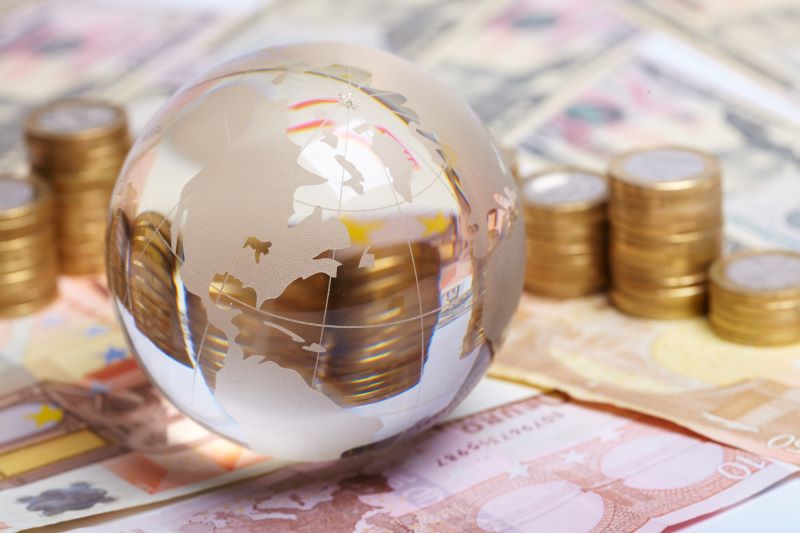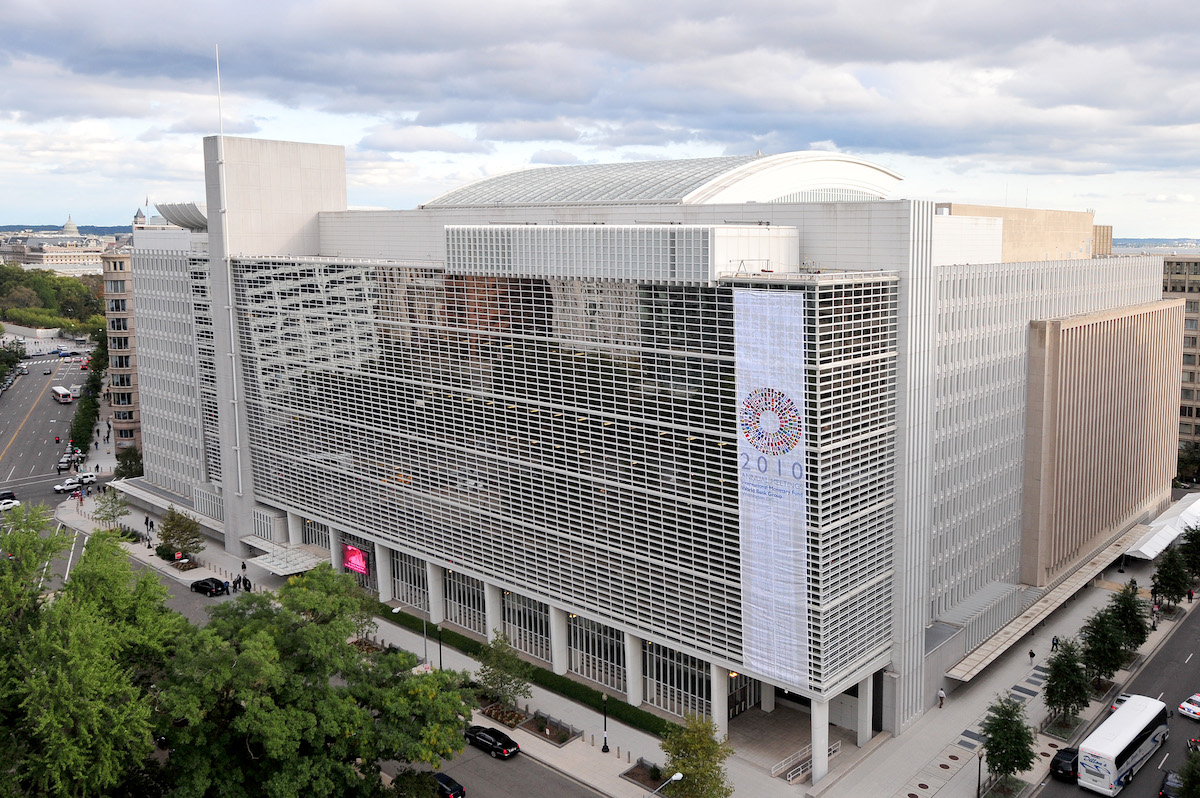Recommended
As international support for Ukraine ramps up, IMF special drawing rights (SDRs) are being brought into the mix. Recently, European Council president Charles Michel supported the Ukrainian Minister of Finance’s call to reallocate ten percent of unused SDRs to Ukraine. Michel underscored that the reallocation decision would be made by EU Member States at the national level. But it is very unclear what this ten percent means or whether it would help.
Mixed messages from European leaders
EU Member States have been allocated 27 percent of the world’s SDRs and so far only a few countries have pledged to reallocate their SDRs to benefit low- and middle-income countries.
Even before the Ukraine crisis, the idea of an SDR reallocation had strong advocates in the EU, not least of them French President Emmanuel Macron and European Council president Charles Michel, both of whom called for reallocating a portion of the Europe’s SDRs to African countries at the AU-EU Summit in February 2022.
However, there has been scepticism about the mechanisms for recycling SDRs. In a statement to the International Monetary and Financial Committee (IMFC) that governs the activities of the International Monetary Fund (IMF), European Central Bank president Christine Lagarde made it clear that EU countries may only recycle their SDRs through the IMF, thus limiting the possible recycling opportunities. This reflects central bank reluctance to provide monetary financing for fiscal purposes.
Discussions about how central bank reserve assets should be used in the current crises is a hot topic, and Charles Michel’s endorsement of recycling SDRs to Ukraine has made a blurry EU policy stance even less clear.
Exactly what are “unused” SDRs?
SDRs are unusual reserve assets. (For those needing some background, it can be found here.) They aren’t a currency, and they are never really depleted: country A can exchange its SDRs for a currency (like dollars or euros or yen) with country B, but after that exchange country B holds the SDRs—they don’t disappear. And a reserve sitting “idle” on a central bank’s balance sheet isn’t unused—it serves as a reserve asset that gives confidence in a country’s currency and ability to pay its overseas bills. SDRs’ passivity isn’t a sign they are unused; it is their use.
But for advanced economies with plenty of reserves (or the ability to print reserve currencies themselves), SDRs may not be needed as a cushion—hence the push for reallocation. The real question, then, is what part of a country’s SDRs can be loaned out without lowering reserves to dangerous levels?
What does “ten percent” even mean?
How much “ten percent” There is an important distinction between a country’s SDR allocation (the SDRs that the IMF has given to country) and its current, actual holdings, which will differ from the allocation if the country has bought or sold SDRs from others.
As all SDRs appear to an outsider to be unused, perhaps the proposal is to reallocate 10 percent of the €215 billion worth of SDRs currently held by European countries, or €21.5 billion (Table 1, third column)?
In August 2021, European countries were allocated new SDRs amounting to €151 billion (table 1, second column). As most European countries did not need these SDRs (because the European Central Bank, or ECB assures their external reserves), perhaps what is envisaged is a reallocation of €15.1 billion to Ukraine?
But G20 countries have already pledged to donate $100 billion worth of SDRs to low- and middle-income countries and some European countries have made their part of that overall pledge public (table 1, fourth column). So, if we count these pledges of €16.9 billion as used, then we would need to subtract €1.7 billion from the amount to be recycled to Ukraine.
|
EU Country |
Total allocation |
New Allocation |
Holdings |
Pledges |
|
Austria |
6,936 |
4,748 |
7,014 |
… |
|
Belgium |
13,189 |
7,742 |
13,179 |
327 |
|
Bulgaria |
1,852 |
1,082 |
1,869 |
… |
|
Croatia, Republic of |
1,304 |
866 |
1,251 |
... |
|
Cyprus |
534 |
367 |
449 |
… |
|
Czech Republic |
3,616 |
2,633 |
3,210 |
... |
|
Denmark |
6,083 |
4,154 |
6,060 |
… |
|
Estonia, Republic of |
372 |
294 |
330 |
... |
|
Finland |
4,410 |
2,911 |
4,439 |
… |
|
France |
37,109 |
24,340 |
35,321 |
1,310 |
|
Germany |
47,360 |
32,165 |
48,029 |
12,713 |
|
Greece |
3,919 |
2,933 |
1,035 |
... |
|
Hungary |
3,592 |
2,343 |
2,345 |
... |
|
Ireland |
5,143 |
4,166 |
5,105 |
... |
|
Italy |
26,485 |
18,199 |
25,871 |
1,310 |
|
Latvia, Republic of |
554 |
401 |
554 |
... |
|
Lithuania, Republic of |
706 |
533 |
732 |
... |
|
Luxembourg |
1,907 |
1,596 |
1,912 |
... |
|
Malta |
323 |
203 |
313 |
... |
|
Netherlands, The |
16,645 |
10,551 |
17,373 |
393 |
|
Poland, Republic of |
6,590 |
4,946 |
5,336 |
... |
|
Portugal |
3,504 |
2,488 |
3,391 |
... |
|
Romania |
3,428 |
2,187 |
3,449 |
... |
|
Slovak Republic |
1,638 |
1,209 |
1,652 |
... |
|
Slovenia, Republic of |
980 |
708 |
1,011 |
... |
|
Spain |
15,078 |
11,516 |
14,951 |
459 |
|
Sweden |
8,184 |
5,350 |
8,613 |
197 |
|
Total |
221,443 |
150,634 |
214,793 |
16,709 |
|
European Central Bank |
0 |
0 |
1,259 |
... |
|
Total |
221,443 |
150,634 |
216,052 |
16,709 |
| All numbers in million of Euros; 1SDR = 1.26 EUR |
And if it’s a European commitment that’s being considered, perhaps the ECB should pitch in as well. The ECB has been steadily increasing its SDR holdings, from €973 million in September 2021 to €1.26 billion in April 2022, so that institution could pitch in €126 million. However, Michel’s intervention clearly states that he is in favour of allowing countries to decide at a national level if they want to reallocate SDRs. Thus, it appears the SDR reserves of the ECB will remain untouched, unless a new-found generosity sweeps over the ECB.
So, is this a good idea?
Assuming that all EU countries go along with the tithing of their “unused” SDRs, it would yield between €13 billion and €21 billion—an unprecedented commitment, compared to the €4.1bn in economic support and €1.5bn for military support already disbursed. However, given the complex geopolitical situation, some countries, such as Hungary, might not participate. Other countries will have to go through their own procedures for transferring SDRs, which vary considerably from country to country and where legislative processes are involved will take some time.
How would these transfers be made? There has been talk of the IMF setting up an administered fund to channel SDRs to Ukraine, although details have yet to be forthcoming. Whether transfers would be loans or grants will also make a difference, as any difference between countries’ SDR allocation and holdings incurs an interest cost to the IMF. If the funds were lent, Ukraine could pay interest to compensate donors for their cost of lending; if transfers were made, there would be a perpetual cost to donors that must be accounted for.
And what would Ukraine do with the SDRs? In the first instance, the SDRs will serve their intended purpose of giving Ukraine a necessary reserve cushion in the face of the extraordinary balance of payments pressures that have resulted from the invasion by Russia. But if Ukraine intends to use their monetary reserves for fiscal purposes—that is, to buy things—the SDRs will have to be exchanged for spendable currencies, perhaps from the very European countries that lent them the SDRs in the first place! This begs the question as to why SDRs should be the medium of support for Ukraine? Why not central bank reserves themselves? Perhaps the political cost of transferring reserves is just too high, but in the end SDRs transfers are just the same. And a subsequent question, that will no doubt come from central bankers is why monetary reserves at all? Shouldn’t support for Ukraine go through the budget, subject to established democratic processes?
In the end, pledging excess SDRs is a politically facile gesture that appears easier than is. The real challenge for European leaders is to take the hard decisions about how much of their resources they will transfer to the Ukrainian people and do it transparently.
Disclaimer
CGD blog posts reflect the views of the authors, drawing on prior research and experience in their areas of expertise. CGD is a nonpartisan, independent organization and does not take institutional positions.







